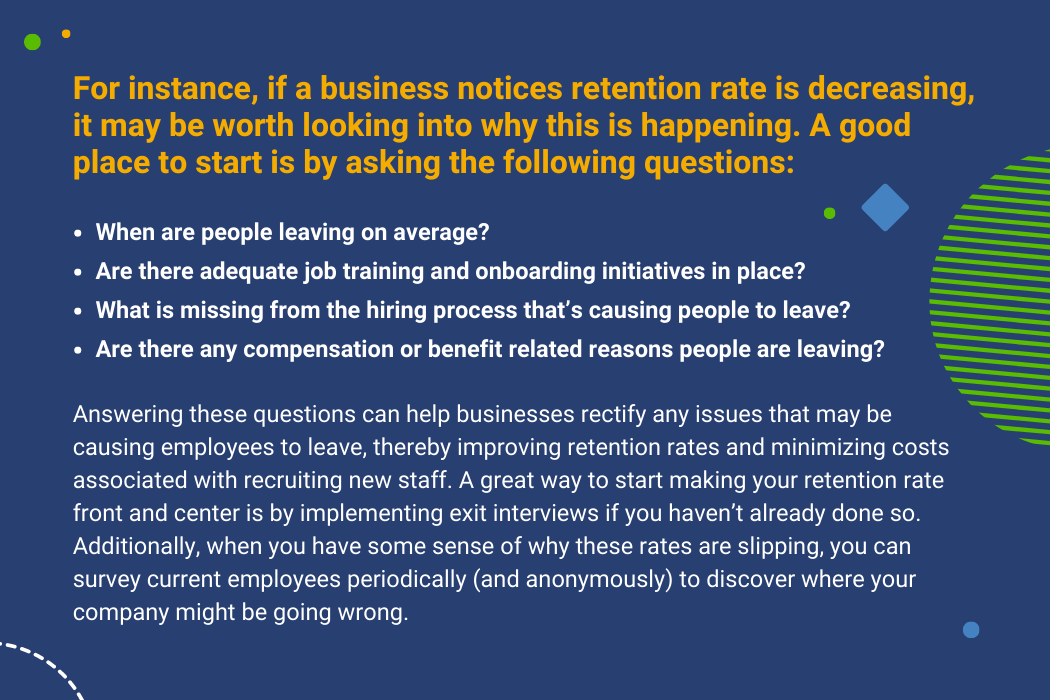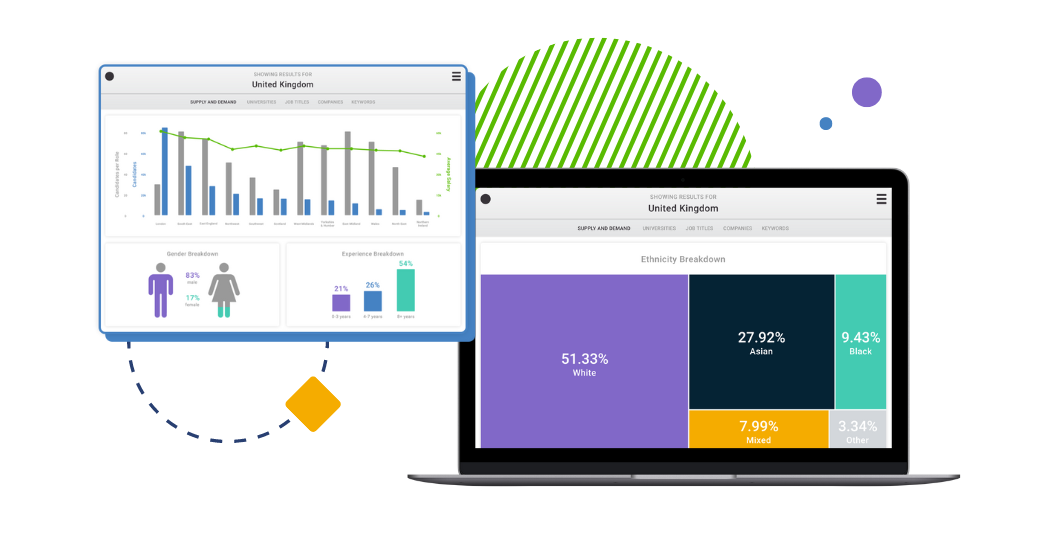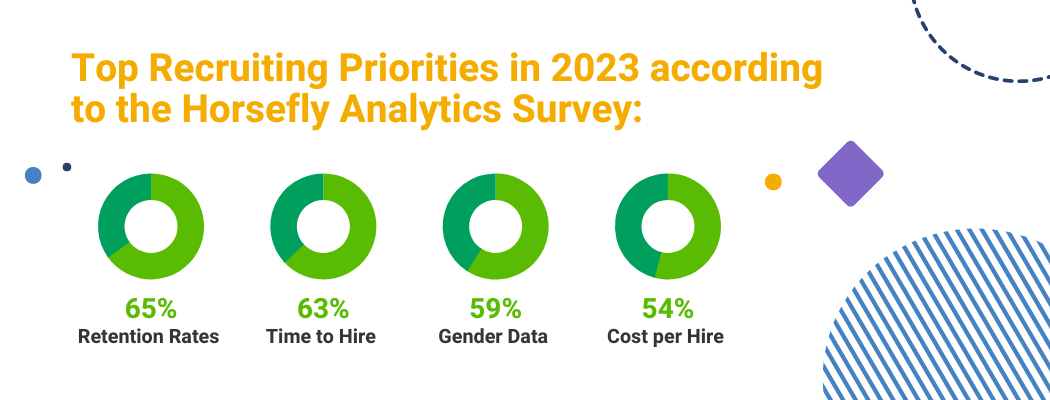2023 promises to be a fascinating year for Talent Acquisition professionals as they work to stay ahead of the ever-changing talent curve. Analyzing Talent Acquisition trends continues to be an integral part of any HR strategy when it comes to making timely and strategic decisions. But how do organizations know where to place their time, energy, and resources when it comes to their TA strategy? It starts with understanding the talent acquisition metrics that matter most.
We asked over 200 Talent Leaders and Workforce Executives what metrics are impacting their corporate and hiring strategies in a recent survey. According to them, the four most important metrics to track when studying Talent Acquisition trends in 2023 are retention rates, time-to-hire, gender data, and cost-to-hire.
These four metrics provide insight into how effective current hiring practices are within organizations and guide future decision-making processes. We'll explore these metrics in depth to figure out why they’re so important, what that might mean for Talent Acquisition in 2023 and how to weave in the ones you may not be tracking yet.
Understand Your Retention Rates
Retention rates are essential for understanding how successful hiring processes are in retaining employees over a period of time. Not only do retention rates help forecast future hiring needs, but they can also be used to identify and address any potential hiring process weaknesses that may result in a high turnover rate.

Answering these questions can help businesses rectify any issues that may be causing employees to leave, thereby improving retention rates and minimizing costs associated with recruiting new staff. A great way to start making your retention rate front and center is by implementing exit interviews if you haven’t already done so. Additionally, when you have some sense of why these rates are slipping, you can survey current employees periodically (and anonymously) to discover where your company might be going wrong.
The data collected from analyzing retention rates can also provide valuable insights for developing effective strategies around recruitment and staffing, workforce planning, company expansion and more. The obvious initial application is to hire better, but underneath this is a wealth of insights you can discover. By comparing your retention rate to labor market data or demographic makeup, you may discover unique ways to impact your succession plan, or that since your firm hires college grads and they typically stay around 4 years, you can create succession plans to allow work to continue, unabated, rather than get caught flat-footed. Knowing which kinds of people will stay with the company longer in advance can aid organizations in making more intelligent decisions when filling positions quickly and effectively.
Explore Time-Per-Hire & Gender Data
Time-to-hire metrics indicate how efficient your company’s recruitment strategies are and how quickly you fill open positions after posting a job. Companies and hiring managers can use this data to optimize their recruitment strategy accordingly. Time-to-hire metrics are also a great way to compare the performance of different departments or teams in terms of their recruiting efficiency.

In continuation, time-to-hire metrics and gender data can help organizations identify steps hindering the hiring process. This could include optimizing job descriptions or tweaking interview questions to be gender-neutral. Additionally, tracking these metrics over time allows companies to measure progress toward increasing their overall level of diversity.
The Great Resignation saw millions of people quitting their jobs each month. However, according to findings from payroll provider Gusto, women’s quit rates were higher than men’s. Some reasons for this were:
- Remote work
- Flexible hours
- Better pay
- Growth opportunities
In addition, gender data can provide valuable intelligence about the diversity of an organization’s candidate pool and insights into areas where improvements can be made. For example, by tracking gender data over time, companies can know whether their recruitment process is attaining the desired levels of diversity or if additional steps need to be taken. By uncovering any potential issues with gender representation at the early stages of the recruitment process, companies ensure that they have a more diverse selection pool from which to choose when filling open positions.
Calculate Your Cost-Per-Hire
The cost-per-hire (or value-per-hire) is an essential metric that organizations must consider when evaluating their current staffing needs and developing strategies for meeting future requirements. Companies must be aware of the costs associated with acquiring new talent. This data will help organizations understand if they are spending too much on recruiting or need to adjust their budget accordingly.
Additionally, collecting cost-to-hire data enables employers to allocate resources within Talent Acquisition strategically. This can significantly improve efficiency and impact outcomes regarding long-term goals like employee retention or diversity initiatives.
Need help calculating your cost-per-hire?
Data-driven insights are becoming increasingly crucial for businesses looking to optimize their operations. Horsefly helps organizations effortlessly calculate essential business metrics, such as:
- Onboarding costs
- Cost-per-hire metrics
- Candidate selection process
- Costs of planning and attracting talent
By analyzing these four metrics in tandem, employers can better understand where any weaknesses lie in their workforce and gain valuable insight into what strategies could be used to improve business outcomes. But these aren’t the only ones that must be considered when creating an in-depth talent strategy aligned with necessary business outcomes. Download our full survey report to discover what else leading-edge companies are tracking, how labor market analytics may become the must-have tool of 2023, and how DEI and employee engagement will impact your company in the coming years.
Look into the future of hiring with the most accurate labor market data and analytics available. Click here to get a free labor market assessment today! Supercharge your talent acquisition strategy with Horsefly Analytics.

